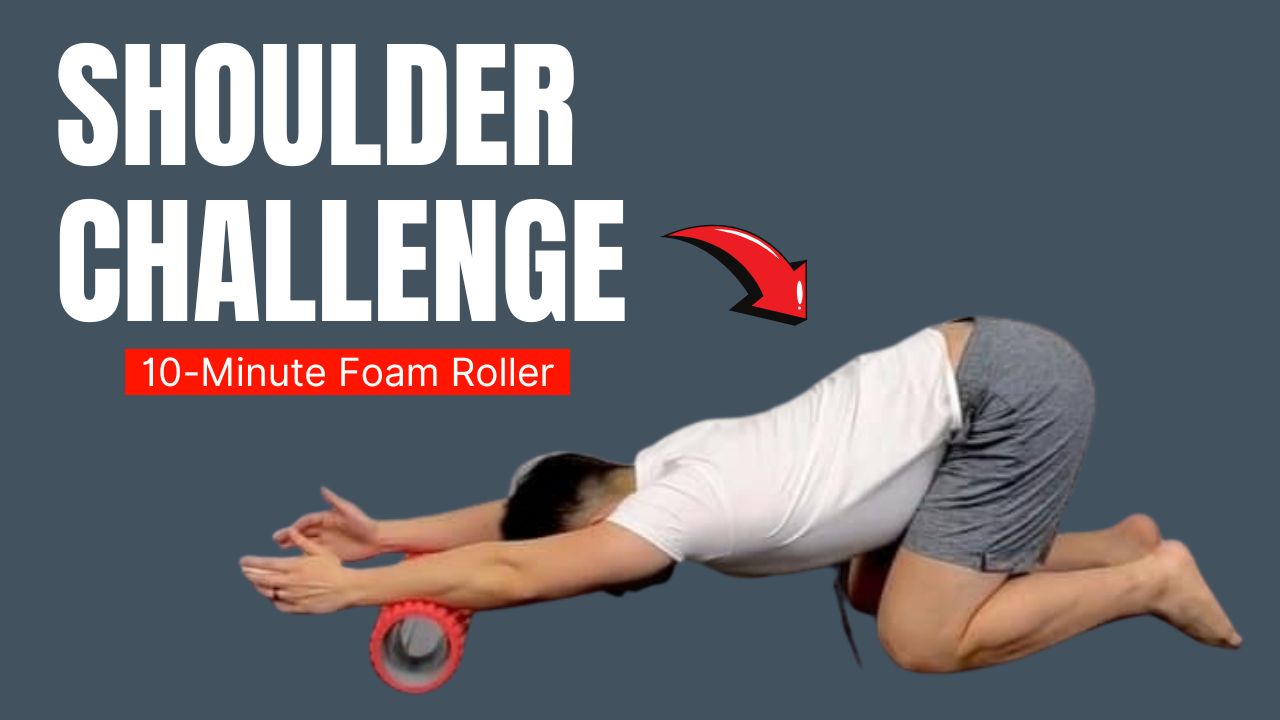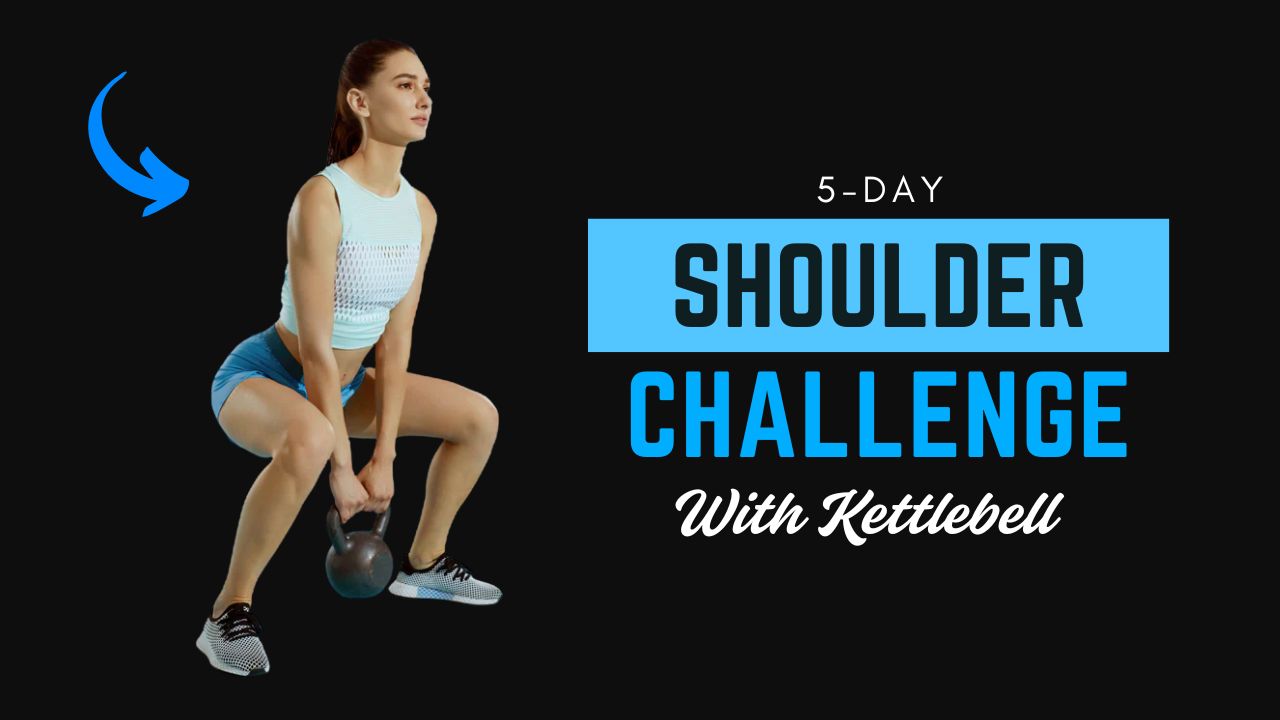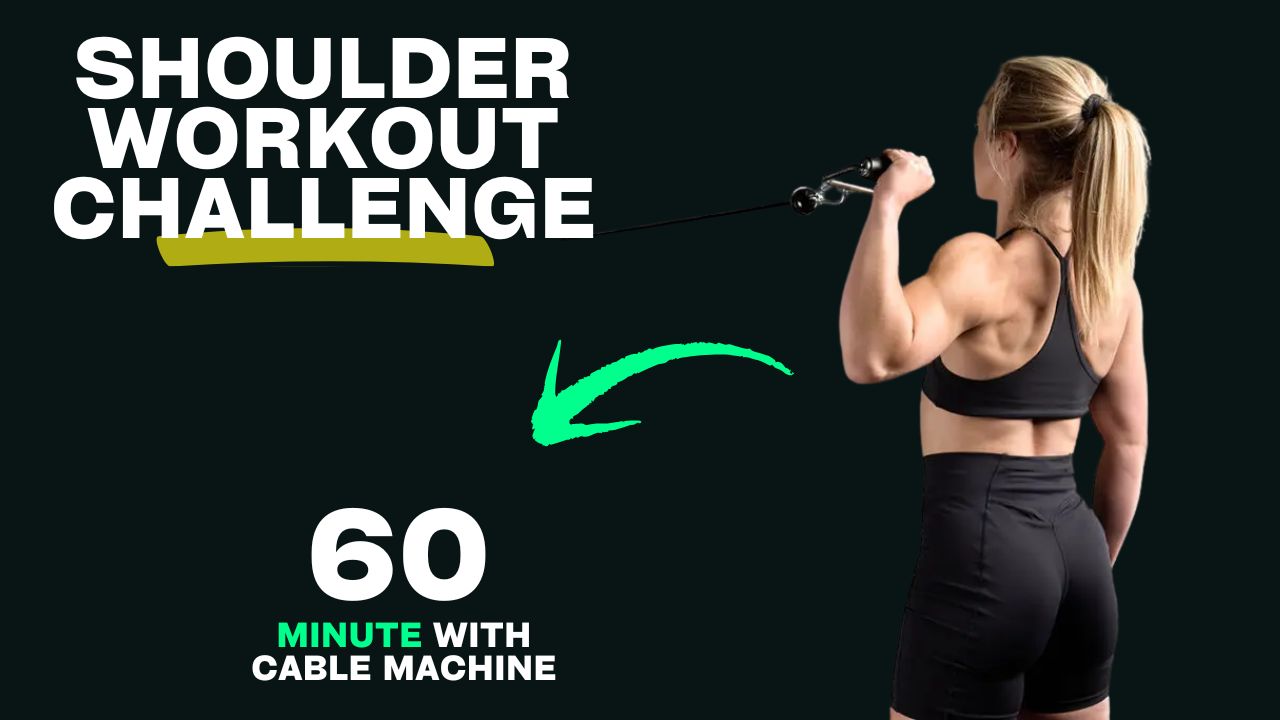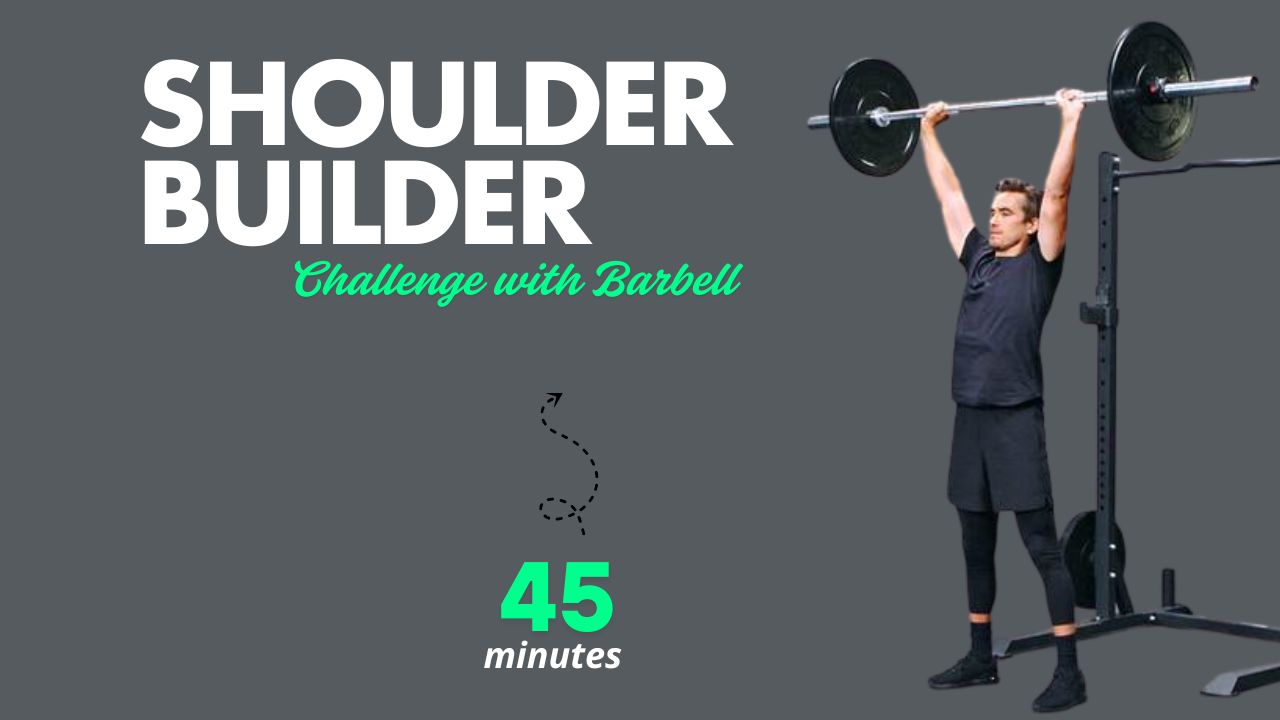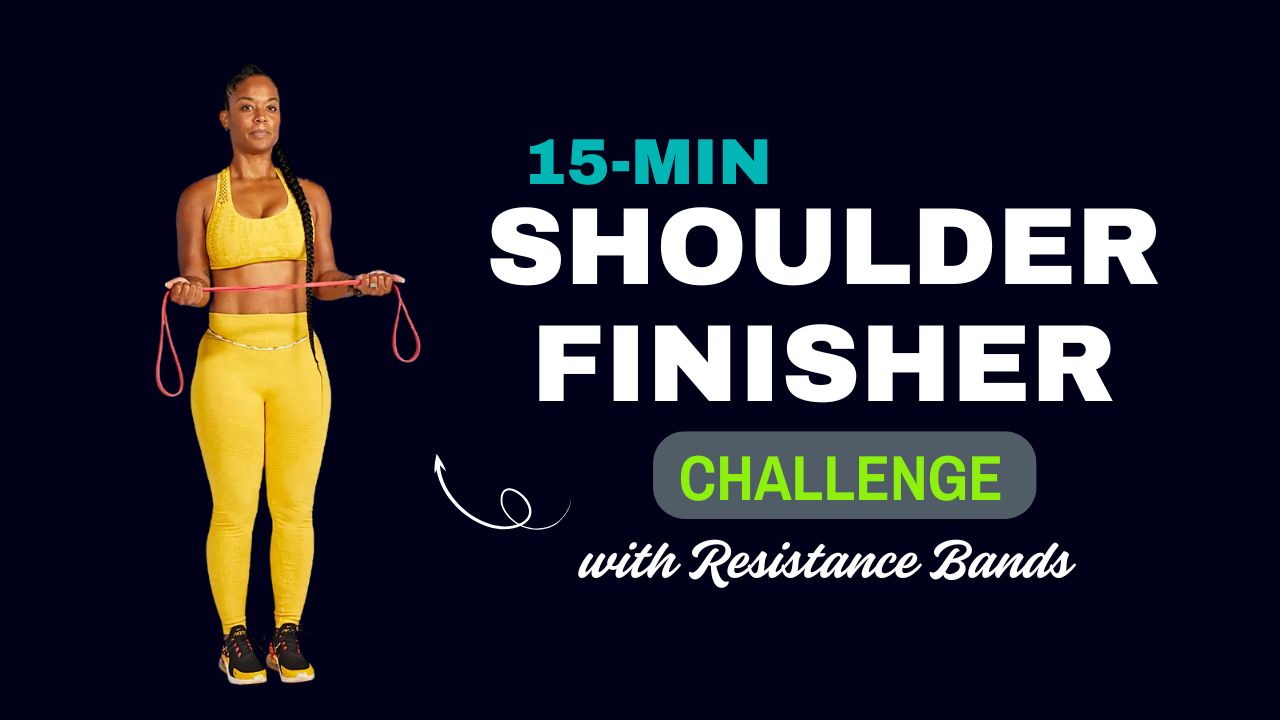If you think back training is all about pull-ups and deadlifts, think again. According to strength training studies, the cable machine activates muscle fibers through a constant range of motion, making it one of the most efficient tools for sculpting a strong, defined back.
The best part? You can isolate, strengthen, and stretch your muscles all in one workout — without heavy joint strain.
Do you know?
One of the most common myths in fitness is that you need “heavy free weights” to grow your back. In reality, controlled resistance with cables can match or even surpass free weight gains, especially for building lean muscle without bulking excessively.
In this 60-minute Back Sculptor Challenge, you’ll target every key muscle in your back — from your latissimus dorsi (lats) to your rhomboids and traps — using only the cable machine.
This routine is designed for lean muscle growth, improved posture, and functional pulling strength.
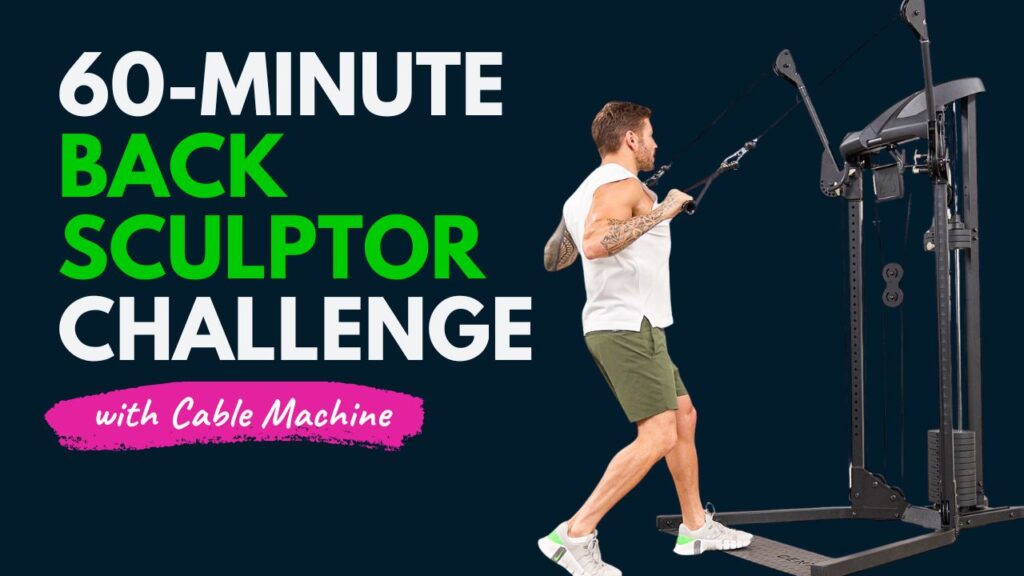
Table of Contents
Why Train Your Back with a Cable Machine?
Before jumping into the exercises, here’s why the cable machine should be a staple in your program:
- Constant Tension: Unlike free weights, cables keep muscles under tension during the entire range of motion, which helps with hypertrophy (muscle growth).
- Customizable Angles: You can target specific parts of your back by adjusting pulley height and handle attachments.
- Joint-Friendly Resistance: Smooth, controlled movements reduce unnecessary stress on joints.
- Versatility: Multiple grip positions and attachments allow you to work muscles from different angles for balanced development.
The Back Muscles You’ll Target
This challenge focuses on:
- Lats – For that V-taper look and wide back.
- Rhomboids & Mid-Traps – For posture correction and scapular retraction.
- Rear Delts – Often neglected, they complete upper-back thickness.
- Erector Spinae – For spinal stability and lower back strength.
What to Expect After 30 Days of the 60-Minute Cable Back Challenge
| Positive Changes | Why It Happens |
|---|---|
| Noticeable increase in back muscle tone and definition | Consistent resistance training activates and strengthens the lats, traps, and rhomboids |
| Improved posture and reduced shoulder rounding | Strengthening the upper back muscles helps pull the shoulders back |
| Better mind-muscle connection during pulling movements | Repetition builds neural pathways for more efficient muscle engagement |
| Increased pulling strength in both gym and daily activities | Progressive overload improves muscle fibers and overall pulling power |
| Reduced risk of upper back and neck tension | Balanced muscle development supports spinal alignment |
| Enhanced workout endurance | Muscles adapt to longer training sessions, improving stamina |
Do’s & Don’ts for the 60-Minute Cable Back Challenge
| Do’s | Don’ts |
|---|---|
| Maintain a neutral spine during all exercises to protect your lower back. | Don’t round your back or hunch your shoulders during pulling movements. |
| Use controlled, smooth movements to keep constant tension on your muscles. | Don’t jerk the cable or use momentum to move the weight. |
| Adjust the seat height, pulley position, and grip for your body size. | Don’t stick to the same grip or angle every session — variation is key. |
| Focus on proper form before increasing weight or resistance. | Don’t lift excessively heavy weights at the expense of form. |
| Squeeze your shoulder blades together at the peak of each rep. | Don’t let the weights slam down — always control the return phase. |
| Warm up your back and shoulders before starting the challenge. | Don’t skip warm-ups or cooldown stretches. |
| Incorporate progressive overload to keep building muscle over time. | Don’t do this intense workout every day — give your muscles time to recover. |
Cable Machine Back Exercises for Lean Muscle Growth
Below are the exercises included in the 60-minute challenge, along with descriptions and step-by-step “How to” instructions.
1. Wide-Grip Lat Pulldown
Description:
The wide-grip lat pulldown emphasizes the outer lats, helping you build width and the iconic V-shape.
How to:
- Attach a wide lat pulldown bar to the high pulley.
- Sit down, secure your thighs under the pad, and grip the bar wider than shoulder-width with palms facing forward.
- Lean back slightly and pull the bar down to your upper chest while squeezing your shoulder blades together.
- Slowly release the bar back to starting position.
- Repeat for the prescribed reps.
2. Seated Close-Grip Row
Description:
This movement targets the middle of your back, rhomboids, and lower traps for thickness.
How to:
- Attach a V-handle to the low pulley.
- Sit with knees slightly bent, feet against the footrests, and arms fully extended holding the handle.
- Keep your chest up and pull the handle towards your lower ribs, squeezing your shoulder blades.
- Slowly extend your arms back to starting position without rounding your back.
3. Single-Arm Cable Row
Description:
A unilateral move that improves muscle symmetry and prevents strength imbalances.
How to:
- Set the pulley to a low position and attach a single handle.
- Stand in a staggered stance or sit with your torso upright.
- Row the handle towards your waist, keeping your elbow close to your body.
- Slowly return to the starting position and complete all reps before switching sides.
4. Face Pull
Description:
Excellent for rear delts, upper traps, and improving shoulder health.
How to:
- Attach a rope handle to the high pulley.
- Grip the rope with both hands, palms facing in.
- Pull the rope towards your face, flaring elbows outward.
- Squeeze at the end for 1–2 seconds, then return to start.
5. Straight-Arm Pulldown
Description:
Targets the lats through shoulder extension without biceps involvement, giving a pure lat contraction.
How to:
- Attach a straight bar to the high pulley.
- Stand facing the cable machine with feet shoulder-width apart.
- With arms extended, pull the bar down towards your thighs while keeping arms straight.
- Slowly return to the starting position.
6. Cable Shrugs
Description:
A great finisher for upper traps and neck thickness.
How to:
- Set the cable to the lowest setting with a straight bar attachment.
- Stand upright and hold the bar in front of your thighs.
- Shrug your shoulders up as high as possible, pause, then lower them under control.
Myths About Back Training
Myth 1: Pull-ups are the only “real” back builder.
Truth: While effective, cable variations provide adjustable resistance and constant tension, which can trigger more hypertrophy in certain cases.
Myth 2: You can’t isolate the back — biceps always take over.
Truth: With proper form, you can minimize biceps involvement and keep tension on your lats, traps, and rhomboids.
60-Minute Back Sculptor Challenge Routine
How to Follow the Challenge:
- Perform the exercises in order.
- Rest 60 seconds between sets for compound moves, 45 seconds for isolation moves.
- Use a weight that allows you to complete the reps with perfect form.
Written Routine
- Wide-Grip Lat Pulldown – 4 sets × 10–12 reps
- Seated Close-Grip Row – 4 sets × 10–12 reps
- Single-Arm Cable Row – 3 sets × 12 reps each side
- Face Pull – 3 sets × 12–15 reps
- Straight-Arm Pulldown – 3 sets × 12–15 reps
- Cable Shrugs – 3 sets × 15 reps
Table Format Workout Challenge Routine
| Exercise | Sets | Reps | Rest |
|---|---|---|---|
| Wide-Grip Lat Pulldown | 4 | 10–12 | 60 sec |
| Seated Close-Grip Row | 4 | 10–12 | 60 sec |
| Single-Arm Cable Row | 3 | 12 each | 45 sec |
| Face Pull | 3 | 12–15 | 45 sec |
| Straight-Arm Pulldown | 3 | 12–15 | 45 sec |
| Cable Shrugs | 3 | 15 | 45 sec |
Safety Tips for Cable Back Workouts
- Maintain a neutral spine at all times to prevent lower back strain.
- Avoid using momentum — move through slow, controlled reps.
- Adjust seat height and pulley positions for your body mechanics.
Progressive Overload for Lean Muscle Growth
To keep progressing:
- Increase resistance slightly every 1–2 weeks.
- Add an extra set to one or two exercises after 4 weeks.
- Experiment with time-under-tension by slowing the eccentric (lowering) phase.
Final Thoughts
A strong, sculpted back isn’t just about looking good — it’s about building functional strength, improving posture, and preventing injuries.
This 60-Minute Cable Machine Back Sculptor Challenge gives you the perfect balance of heavy compound pulls and targeted isolation work for maximum lean muscle development.
Frequently Asked Questions (FAQs)
Can beginners try the 60-minute cable back challenge?
Yes, beginners can follow this workout by reducing the weight and the number of sets. Focus on perfect form before increasing intensity.
How often should I do this back workout for best results?
For lean muscle growth, aim to train your back 1–2 times per week with at least 48 hours of rest between sessions.
Will this workout help with posture improvement?
Yes. Many of these exercises strengthen the rhomboids, traps, and rear delts, which support proper posture and shoulder alignment.
Can I replace free weight back workouts with cable machine training?
Yes, especially if you have joint issues or prefer constant tension training. However, combining both free weights and cables can maximize results.
How long will it take to see visible results from this challenge?
Most people start noticing improved back definition within 4–6 weeks of consistent training and proper nutrition.
Is this workout suitable for women?
Absolutely. Cable machine workouts are highly adjustable, making them effective for both men and women aiming for lean, toned muscles.
What weight should I start with on the cable machine?
Start with a weight you can lift with perfect form for the target reps. If you can’t complete at least 8 reps, it’s too heavy; if you can easily do more than 15, increase the resistance.
Do I need any other equipment besides the cable machine?
No. This routine is fully cable-based, but having different attachments like a V-handle, rope, and straight bar will help target muscles more effectively.
Can I do this workout if I have lower back pain?
If you have lower back pain, consult a physiotherapist first. You may need to avoid certain moves or reduce resistance to prevent strain.
Should I do cardio on the same day as this back workout?
You can, but do cardio after the workout to conserve energy for your lifts.


